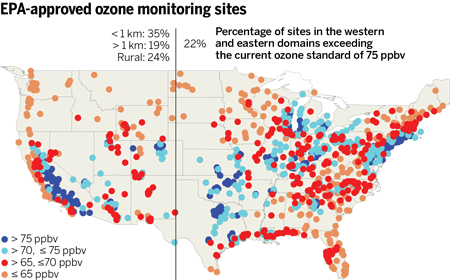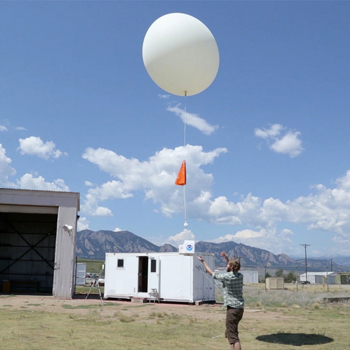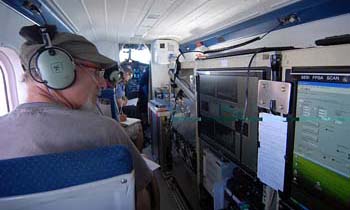A .gov website belongs to an official government organization in the United States.
A lock () or https:// means you've safely connected to the .gov website. Share sensitive information only on official, secure websites.
4 June 2015

A tougher federal standard for ozone pollution, under consideration to improve public health, would ramp up the importance of scientific measurements and models, according to a new commentary to be published in the June 5 edition of Science by researchers at NOAA and its cooperative institute at the University of Colorado Boulder.
The commentary, led by Owen Cooper of CSD, looks at how a new, stricter ozone standard would pose challenges for air quality managers at state and local levels. Last November, the Environmental Protection Agency proposed lowering the primary ozone standard from 75 parts per billion (ppb) to 70 or 65 ppb, based on ozone's known effects on children, the elderly, and people who have lung diseases such as asthma. A decision by the EPA Administrator is expected in October 2015.
The problem for state and local officials is that ozone pollution has several sources, some of which are beyond their borders. At any given place, a certain amount of the ozone pollution comes from local emissions by vehicles and other sources. Additional amounts can blow in from pollution sources across the ocean or in other parts of the United States. And some ozone is produced from natural sources or descends from the upper atmosphere's ozone layer.

Sorting all this out is where science comes in, says Cooper. "It's not easy, but we do know how to figure out where the ozone comes from. This source information is exactly what air quality managers will need to know when the margin for allowable locally produced ozone shrinks."
Ozone is a pollutant that has respiratory health effects in humans and also impairs plant growth and damages crops. It is produced when emissions of nitrogen oxides (NOx) and volatile organic compounds (VOCs) react in the presence of sunlight. Controls on NOx and VOC emissions from vehicles, power plants, and other sources have enabled many U.S. counties to meet the 75 ppb standard, but the number of counties in "nonattainment" status (currently at 227) would jump to 358 or 558 if the standard is revised to 70 or 65 ppb, respectively.
The new commentary suggests that to quantify how much ozone flows into the United States from all upwind sources, additional measurements would be needed, from instruments on the ground, on balloons, and on aircraft. These observations could help scientists and air quality managers evaluate the performance of the computer models that are used to determine sources of ozone at a particular location. Once the models can successfully replicate the observed ozone levels, scientists and air quality managers will have greater confidence in the model estimates of how much of that observed ozone is beyond the reach of domestic control measures.

That information is critical because the U.S. regulatory framework has procedures for exceptions and other allowances if non-local factors are significant for a given locality. And, those outside factors have been growing in recent decades, with sources in South and East Asia pushing up the baseline of ozone that enters the western U.S., for example.
"The ozone baseline is rising, especially in high-elevation regions of the western U.S. that are more strongly influenced by high ozone coming from upwind sources or from the stratosphere. Lowering the federal ozone standard to protect public health will reduce the wiggle room for air quality managers. We point out that measurements and science will be crucial to successfully navigating the new regulatory landscape," said Cooper.
The EPA has stated that in their upcoming regulations and guidance, they will assist states in ensuring that sources of ozone that are outside of U.S. borders do not create unnecessary control obligations.
Owen R. Cooper, Andrew O. Langford, David D. Parrish, and David W. Fahey, Challenges of a lowered U.S. ozone standard, Science, doi:10.1126/science.aaa5748, 2015.
At Earth's surface, ozone is an air pollutant that causes respiratory health effects in humans and impairs plant growth and productivity (1). The Clean Air Act (CAA) of 1970 mandates that the U.S. Environmental Protection Agency (EPA) assess the ozone standard every 5 years and revise when necessary to protect human health. With a decision expected in October 2015 as to whether the standard will be toughened, we discuss limitations of ozone and precursor observations that hinder the ability of state and local air pollution–control agencies to accurately attribute sources of ozone within their jurisdictions. Attaining a lower standard may be particularly challenging in high elevations of the western United States, which are more likely to be affected by ozone that has been transported long distances or that originated in the stratosphere.